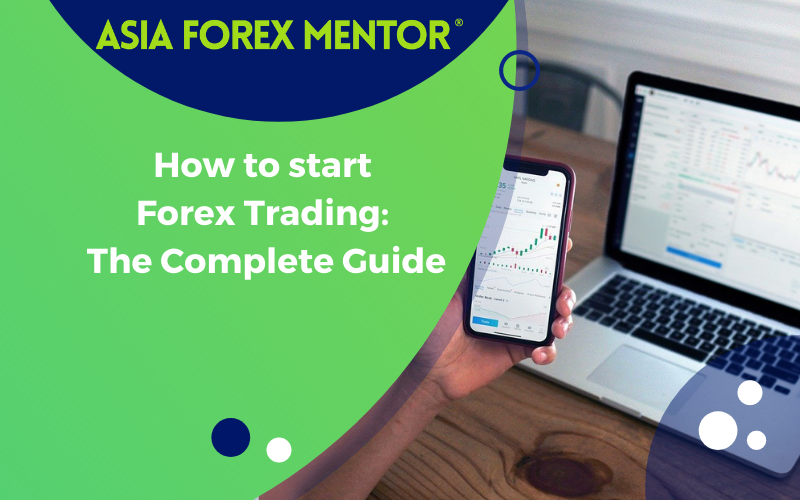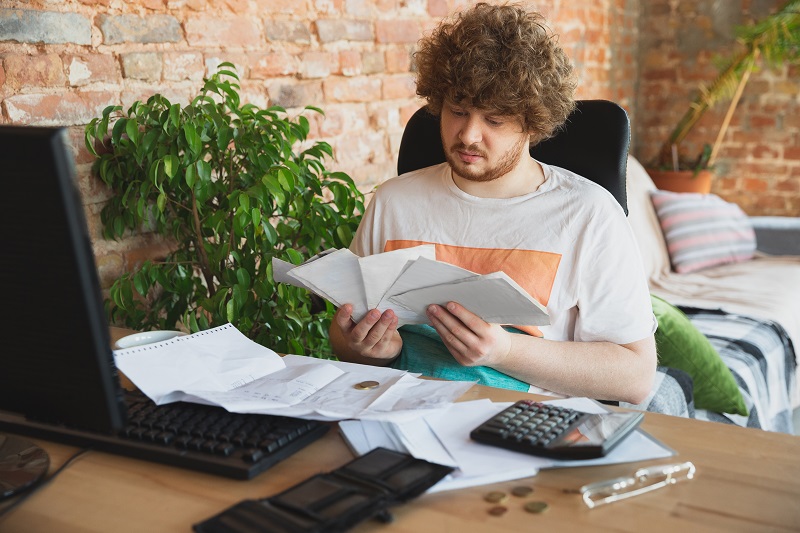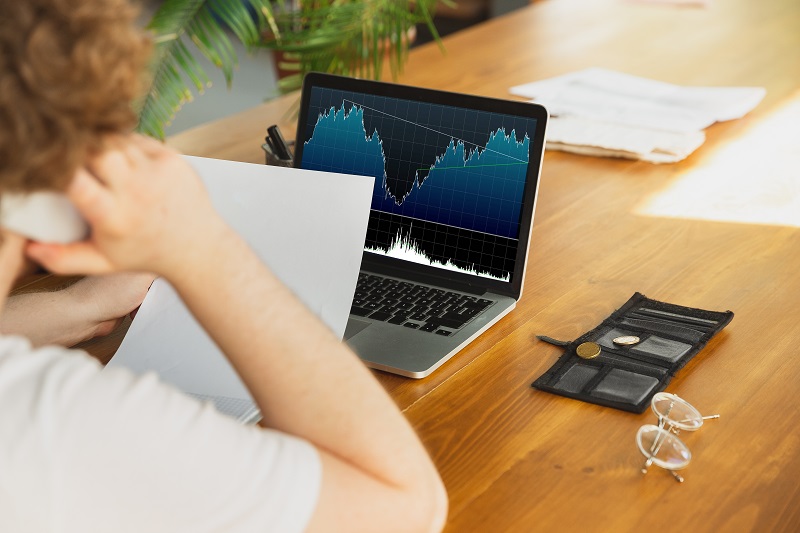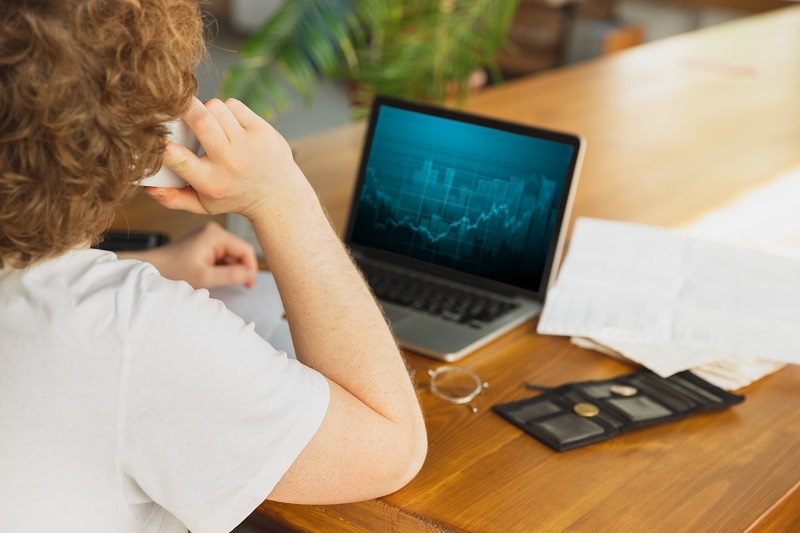
How to Start Forex Trading?
You may have heard stories of how people managed to be completely financially free through Forex trading. Financially free in this case means that you would just need to spend a day or a few hours looking at charts, trading, and making a lot of profits in a few clicks. On one hand, it sounds like one of those scammy “get rich quick” schemes, and you would be right because getting rich is never that simple. On the other hand, if you do it right, you could really be financially free. The only problem is that you need to know how to start Forex trading and how to do it right.
Contents
- The Basics: What is Forex Trading and How Does it Work?
- There are a few benefits to Forex trading. They are:
- How to Start Forex Trading in Singapore/UK/USA
- How to Trade Forex for Beginners
- How to Trade Forex with $100
- Forex Trading Tutorial
- Forex Trading App
- Forex Trading for Beginners – YouTube
The Basics: What is Forex Trading and How Does it Work?

Let’s head back to the beginning and talk about the thing you’re getting yourself into. What is the Forex market and how does it work? Forex is Foreign Exchange. So, Forex trading is nothing more than trading one form of currency to another. Looking at this concept alone, you can say that almost everyone has tried out Forex at one point in their life, albeit not for profit.
Suppose that you’re living in America and you’re going to Thailand on a summer holiday. You know that Thailand people don’t spend US dollars, so you need to get Thai Baht. So, you sell your US dollars for Thai Bahts. This is already Forex trading.
But in this case, there are ways to make a profit just by exchanging these currencies since their values tend to fluctuate. Sure, making a 0.001 cent profit off your $10 might not seem like much, but on a larger scale, the numbers add up very quickly. This is how some savvy traders manage to be financially free just by trading Forex.
So, profit scales quickly with the amount of money. You need to have a rather deep pocket to play this game. For this reason, you don’t find too many people who are willing to jump into it. Large institutions, however, do play this game. Central banks, banks, corporations, and retail traders are the main players on this stage.
What we’re more interested in are the retail traders. This is the individual who dabbles in the Forex market to turn a profit. Unfortunately, in the Forex market ecosystem, these people are also at the bottom of the ladder. So how do these players interact with one another?
The center of the ecosystem is the central banks. These are the largest players. Then, there are the major banks such as Gold Man, JP Morgan, Deutsche Bank, etc. These large banks have connections with investment funds and commercial companies such as Toyota or BMW, as well as hedge funds who want to dabble in the Forex market. In addition, they also have connections to market makers and ECN brokers. From there, this is where your brokers connect to you, the individual retail traders, via their own trading platform.
It starts with the banks communicating with retail brokers, commercial companies, or investment funds. Banks can either dabble in one, two, or all three categories. You, as a retail trader, only have access to the market maker who can pass on your order to the bank directly or however your broker built their trading system.
As you can see, the retail traders are at the bottom of the rank. Therefore, they are not the ones who influence the market. That is up to the big players. Going forward, you will see how many trading strategies advise you to trade alongside the large banks. Going the other way usually does not end well for you.
There are a few benefits to Forex trading. They are:
- Low barrier to entry
- Better risk management
- High liquidity
- Trade whenever and wherever you want
- Low transaction costs
Low Barrier to Entry
Pretty much everyone can join and trade the Forex market unless you’re living in a country that is banned from Forex trading. Sure, you’ll need to have a rather deep pocket so the profits you make have more oomph to them, but joining the game does not cost you much. There’s nothing stopping you from opening an online account and submit the paperwork so you can start trading.
Better Risk Management
You can trade very small lot sizes in the Forex market. You can go for the micro lot or even the nano lot if you want to play it safe. As the names suggest, they are very small lot sizes that allow you to manage your risk better, unlike stock. For instance, you can buy one share of a blue-chip stock. In Singapore, a lot of share is at least 1000 shares. So if your account size is too small, you can’t even buy one lot in Singapore. In Forex however, you can trade in really small sizes, so you have better control.
Read more about: Risk reward ratio Forex
High Liquidity
You don’t have to worry too much about getting a poor price when you put an order into the Forex market since there is a large amount of liquidity. To even move the market, you need to enter really massive lot sizes. In addition, you don’t need to worry about if you get filled or not since when you hit the market, the price you see on the screen is the price you tend to get.
Trade Anytime You Want
Forex is always open, except for the weekend. So you can trade pretty much whenever you want. You can wake up in the London session, put in an order, and manage your trade in the New York or Asian session, for example. For the stock market, it’s only open eight hours a day during their time zone.
Low Transaction Costs
In reality, there are no transaction costs. Normally, you only pay the spread. So, what is the spread? When you look at a currency pair, you have the bid and ask price. The bid price is the price that you can sell the base currency. The ask price is the price that you can buy the currency. The difference between the two is the spread.
This is how “no commission” brokers make a profit. They do not charge you a fee when you make a trade. Rather, the cost is built into the bid and ask price of the currency pair. It goes something like this:
- When you buy a currency from a broker, they sell it to you for more than what they paid to buy it.
- When you sell a currency to a broker, they buy it from you for less than what they get to sell it.
- The difference between the two is the spread.
Here’s an simple example. Suppose that you want to sell your laptop to a store that buys used laptops. To make a profit from you, the shop needs to buy your laptop at a price that is lower than what the price that laptop fetches when the shop sells it.
So if your laptop can be sold for $1,000 then the best offer you’re going to get is $999. That $1 difference is the profit the shop would make. In other words, that is the spread.
This is different in the stock market. Suppose that you want to buy shares worth about $500. The transaction cost is $25 in Singapore. So you pay 5% the moment you go for the trade, and we still haven’t considered the spread on the trade you’ve just paid. The point is that if you trade stocks with a small amount of cash and you buy a small number of shares, that fixed transaction costs in stock trading will cut into your returns.
How to Start Forex Trading in Singapore/UK/USA

You can start forex trading in all Singapore, UK, or the USA as there are brokers that are based in these countries. There are a few that are based in Singapore such as Avatrade , Oanda, etc. You need to register on their app or platform from that broker and then you can start trading on their interface.
How to Trade Forex for Beginners

Trading Forex is a complicated game, but there are a few things you need to know to help you become a more successful trader:
- Research the market: Knowledge is power. If you want to be successful, you need to know about the currencies and other factors that influence their values. Many online brokers provide resources to help you with just that.
- Use a demo account: It’s not wise to jump into the Forex trading world and start using the money from your account immediately. Again, many online forex brokers give you an option to create a fully functional demo account that you can trade with without the need to make a deposit. That way, you can get a good feel for the market and familiarize yourself with the interface before you make that commitment.
- Once you’re confident with your demo experience, you can move on to a live trading account and begin with a small deposit. The key at this stage is to trade responsibly and focus on consistency rather than quick profits.
- Many brokers, including XM, make this transition easy by offering different account types — such as micro and standard accounts — so you can start with low capital and gradually scale your trades as you gain experience. XM also provides negative balance protection and a user-friendly platform, allowing beginners to practice real-market conditions while keeping risk controlled. As you trade, keep refining your strategy, track your progress, and continue learning from the market’s behavior.
Check out our review with XM here.
How to Trade Forex with $100

$100 does not buy you much nowadays, but if you put that into Forex trading and play your cards right, you can turn a hefty profit and might even serve as another source of income for you from the comfort of your own home. But you need to have a rock-solid plan to turn your $100 to $1,000,000. For this, you need an excellent understanding of the market, which won’t come to you in a short time. In fact, many traders turn to online tutorials and mentors for help.
Read more: How much money can you make trading forex?
Forex Trading Tutorial

Thankfully, you can find a lot of Forex trading tutorial online. These are very useful resources to help you get started with the Forex trading game and you should at least go over them once so you have an idea of what you’re getting yourself into. That said, although they are a solid foundation to start from, you should not rely wholly on free resources as they only provide you with very basic information.
You will need to pay for a trading course online to be successful or spend a lot of time trading to accumulate enough experience. The risk here is that you can run into failed traders who just want to sell you empty promises. So, shop around until you find a course offered by a mentor who is successful and has real experience in Forex trading. A good place to start is Asia Forex Mentor.
Forex Trading App

There are a ton of forex trading apps and platforms out there and they cater toward a unique and niche segment of the market. However, a reliable trading app needs to have 3 things.
The first is real-time updates. This should be the most important aspect of the platform. The value of the currency can change in an instant, so you need the latest information as soon as possible so you can secure the best trade possible. This requires a stable internet connection and large processing power, meaning that trading on your phone is generally not a good idea. You can test out the app with a few small test trades to see if it’s actually responsive enough.
Another thing to look for is the spread. Normally, the spread is only a small fraction of the currency you’re trading. However, if you trade in Forex enough times, this can eat into your profit. So look around for forex brokers until you find a good one that offers fair fees to maximize your profit and minimize your loss when you trade.
Finally, a good trading platform should have educational resources. This is paramount in the Forex market since it is in constant flux. Having as much information at your disposal would help you immensely in trading. So the best platforms generally provide information for the technical side of trading as well as newsletters so that you can predict how currencies will rise and fall.
With this in mind, you don’t have to waste your time going through all of the trading platforms out there. We’ll tell you 4 of the best apps so you can get started right away.
- Forex.com: This is the best trading app for beginners as it offers a whole suite of features. It has one of the lowest spread and an excellent mobile app for both iOS and Android. The mobile platform has all the features as its desktop counterpart.
- TD Ameritrade’s thinkorswim: This is a good trading app for intermediate trainers. The interface is intuitive and user-friendly. If you have a brokerage account open with them, you can also trade options, stocks, and futures on their app as well. Moreover, they also offer trading alerts via push notifications as well.
- eToro: eToro is a good platform for advanced traders. This platform offers various features such as real-time execution of market orders and unrestricted daily withdrawals. In addition, you have access to various analysis tools, real-time data, and more.
- Nadex: Nadex contains a whole host of technical analysis tools such as account management tools, real-time direct market access, and other features as well. It might take a while to get used to their interface, though.
- XM: XM is highly recommended for beginners to practice trading, as it offers a free demo account for learning in a risk-free environment and a low $5 minimum deposit to easily transition into live trading.
Forex Trading for Beginners – YouTube
If you really are just starting out and find free articles out there that aren’t helpful, you can go to YouTube for more explanations. Many traders have YouTube channels explaining strategies or concepts with illustrations so you should be able to get more value from them. If not, the comment section is a good place to consult if you have any further questions.
If you go to YouTube right now, you can look up Asia Forex Mentor (AFM). AFM is founded by Ezekiel Chew who has over 20 years of Forex trading experience and he offers quality trading lessons on his website. He also has a number of forex trading videos on YouTube explaining the intricacies of Forex trading such as in-depth analysis, trading strategies, etc.
You can get a lot of values from videos like these, although you won’t get everything. For AFM, you can also get a 5-lesson sample from them so you know how to start forex trading and what you’re getting from the full program. In addition, if you do enroll, you can also see Ezekiel trade live every week so you can see how the experts analyze the market and set up their trades.

















